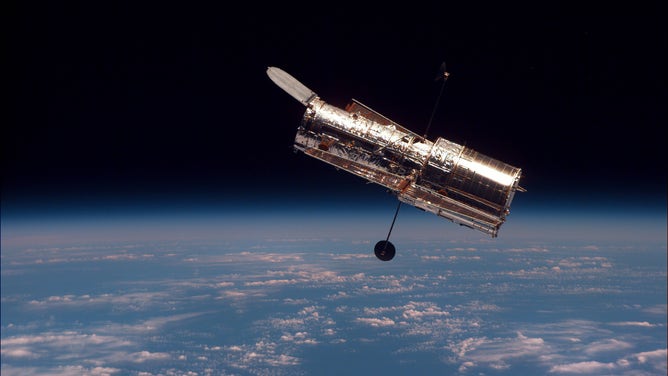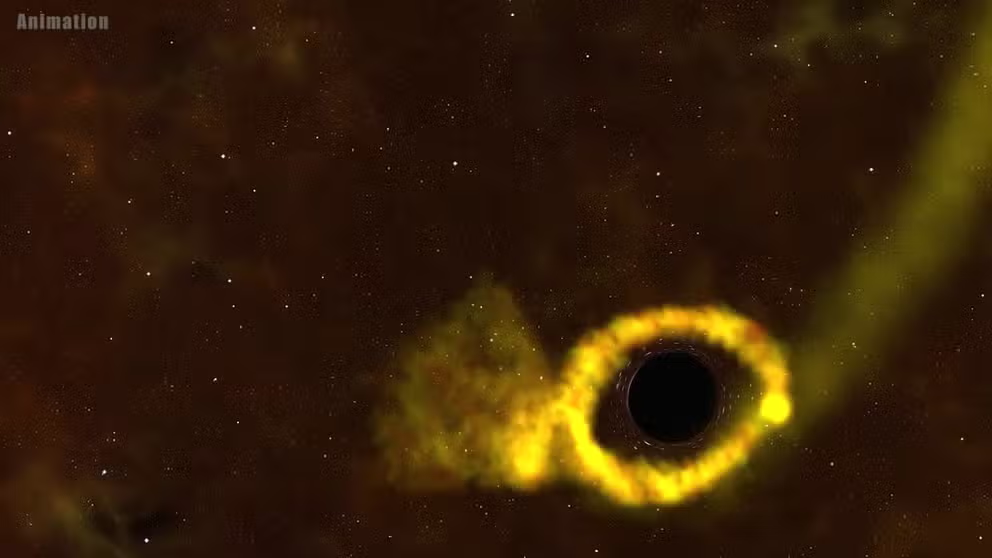See the galaxies soon to collide in new images from the Hubble Space Telescope
The three galaxies are separated by only 50,000 light-years. For context, the closest galaxy to our Milky Way galaxy is more than 2.5 million light-years from Earth.
Hubble Space Telescope used to watch black hole eat a star
Astronomers used Hubble Space Telescope's ultraviolet capabilities to investigate the death of a recently devoured star nearly 300 million light-years away. These events are known as "tidal disruptions."
On Friday, NASA released an image of three large galaxies that will eventually merge into one larger galaxy.
Called SDSSCGB 10189, the merging trio is located in the constellation Boötes near the Big Dipper. According to NASA, the trio is a "relatively rare combination of three large star-forming galaxies."
The three galaxies are currently separated by only 50,000 light-years, NASA said. For context, the closest galaxy to our Milky Way galaxy, the Andromeda galaxy, is more than 2.5 million light-years away from Earth.
This moment of convergence was captured by the NASA/European Space Agency Hubble Space Telescope. Launched in April 1990, Hubble has been taking pictures of planets, stars and galaxies from its low Earth orbit.

The Hubble Space Telescope floats above the Earth's atmosphere.
(NASA)
Astronomers used the telescope to study the three colliding galaxies to better understand the universe’s most massive galaxies, which are called Brightest Cluster Galaxies (BCGs). According to NASA, scientists believe BCGs form by merging large, gas-rich galaxies, such as the ones captured by Hubble.
HOW THE TELESCOPE BECAME OUR WINDOW INTO THE UNIVERSE
When the galaxies do eventually merge, their constituent spiral structures will be distorted through mutual gravitational interaction, according to NASA. In doing so, they will become one larger galaxy.
Galaxies often collide. In fact, based on Hubble observations of our neighbor the Andromeda galaxy, Andromeda may have already collided with at least one other galaxy.


